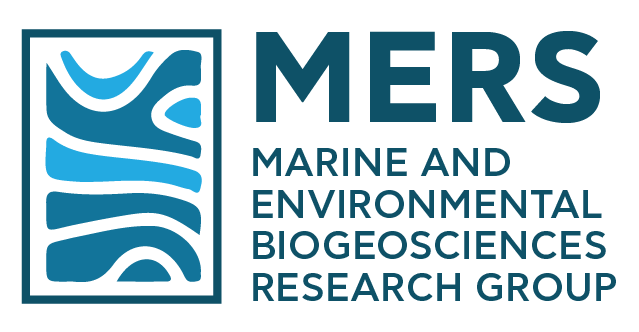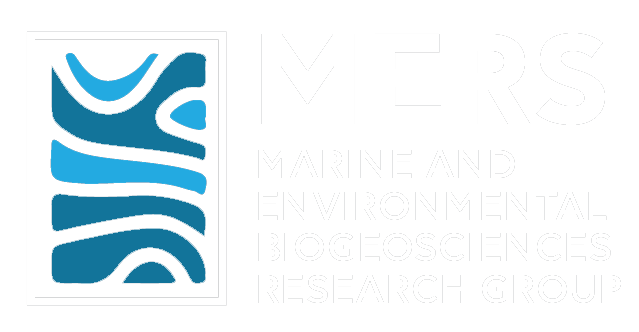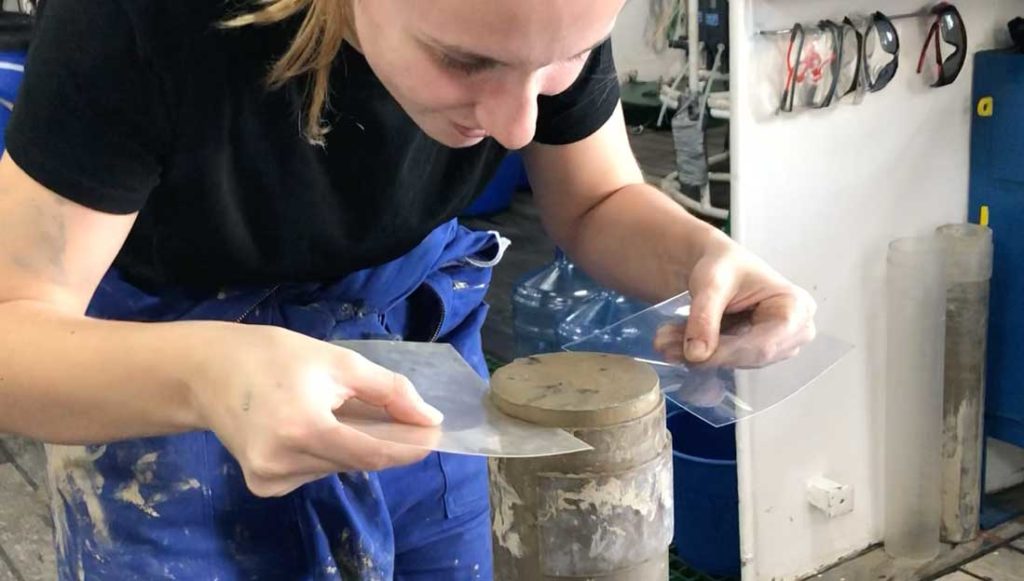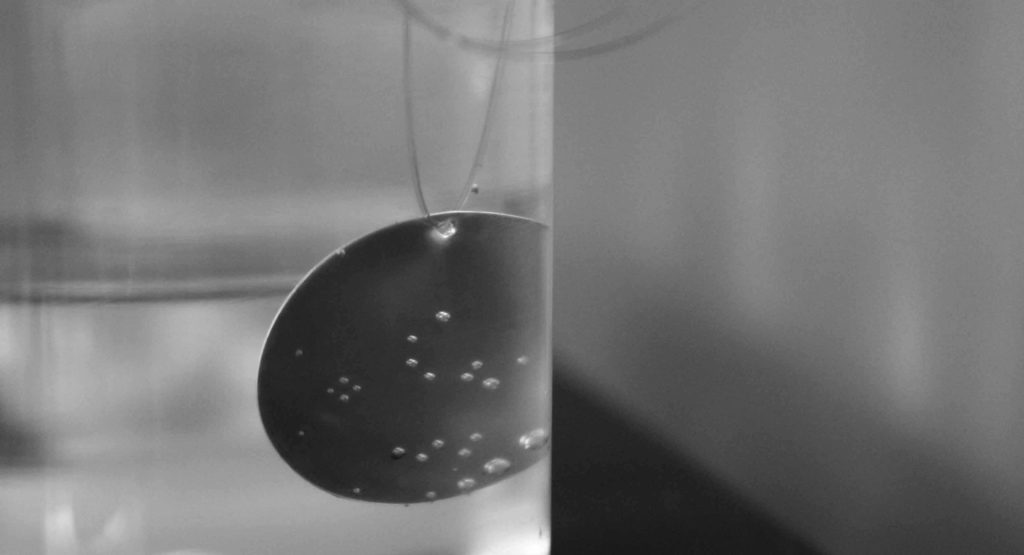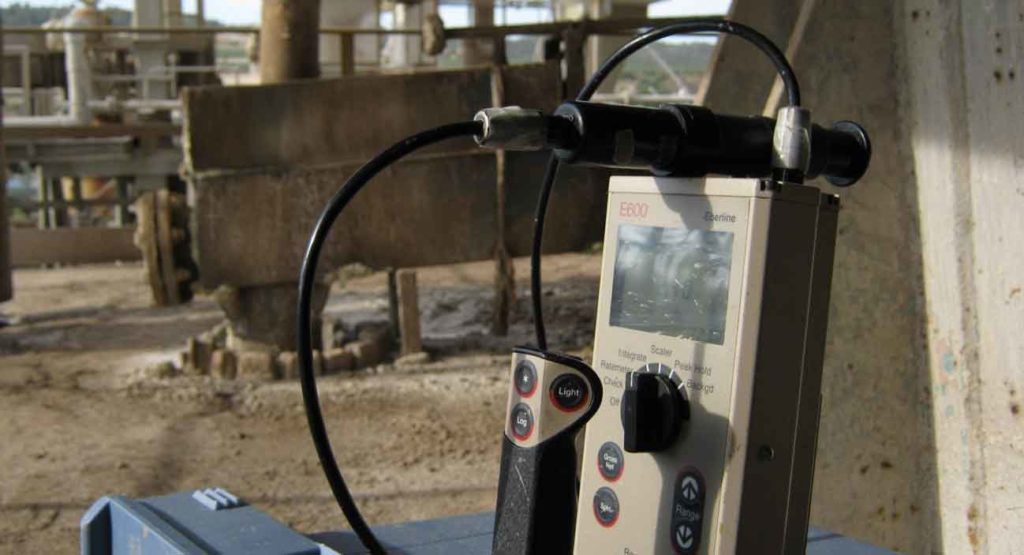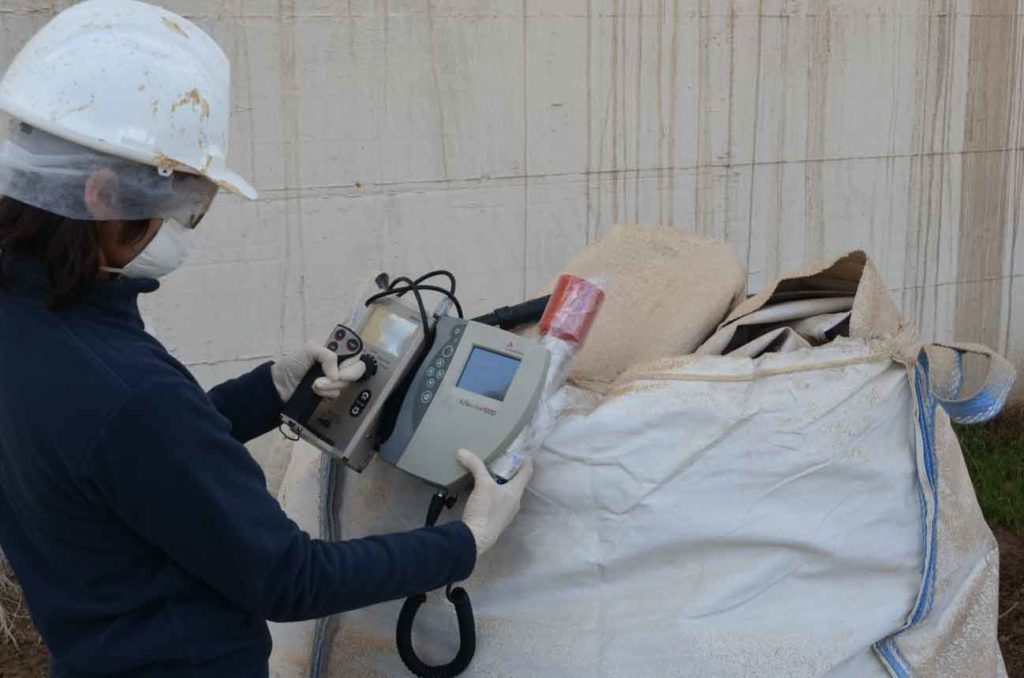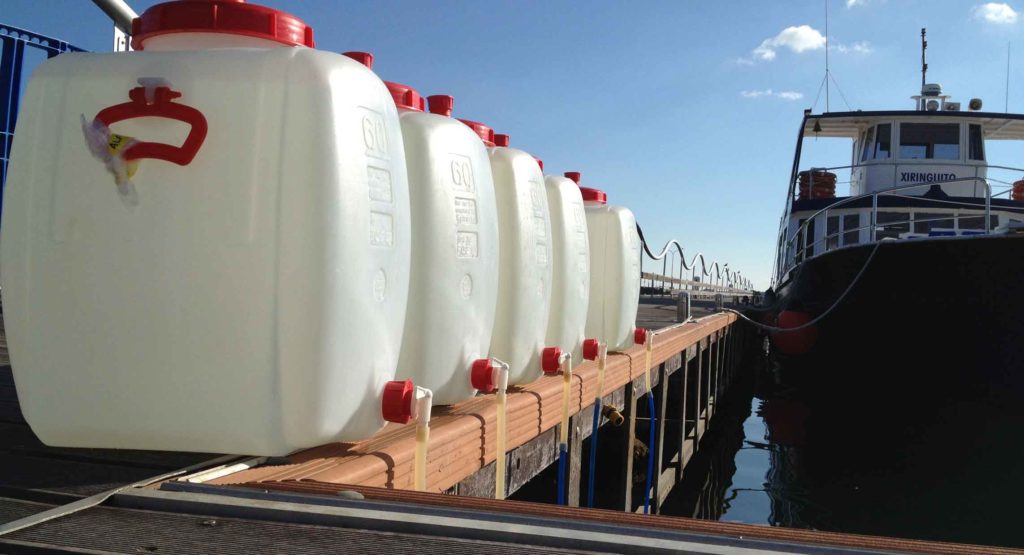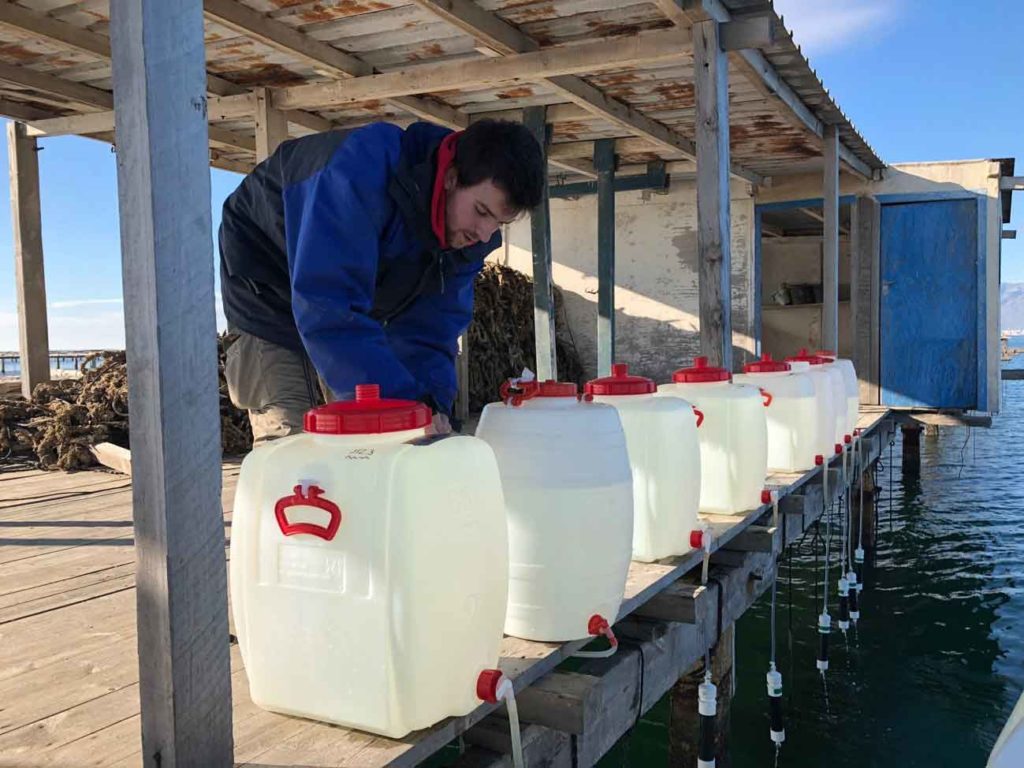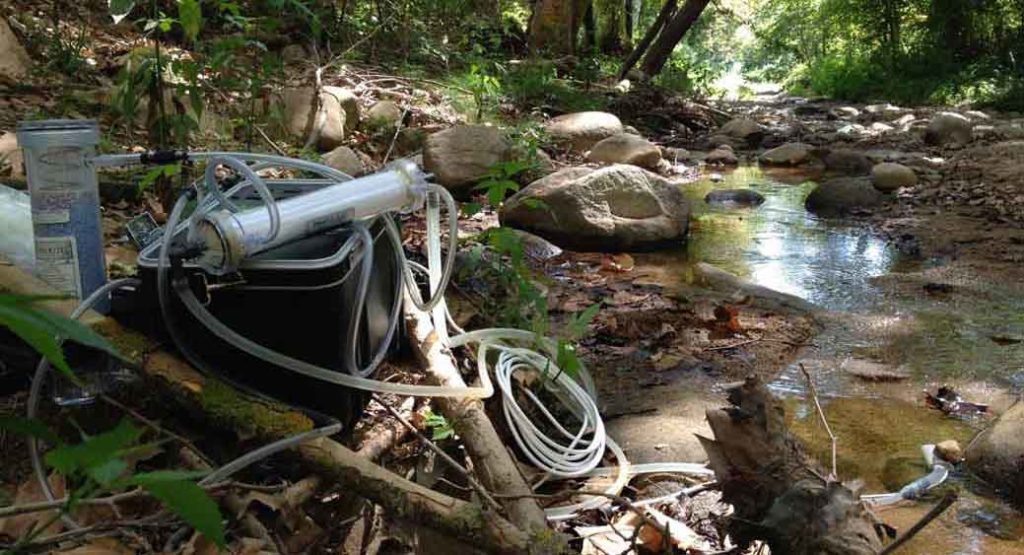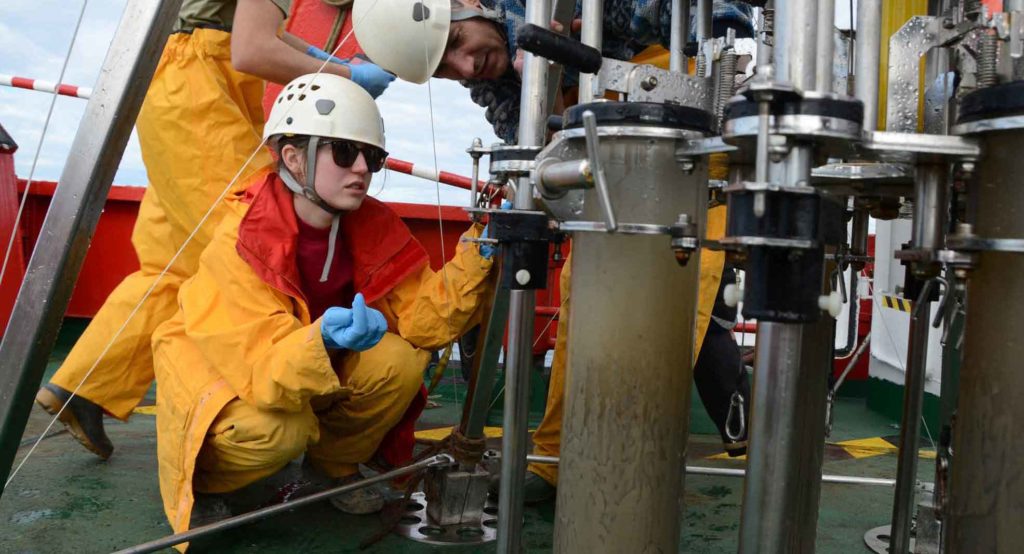The MERS research group includes the Environmental Radioactivity Research Group Laboratory (GRAB) of the UAB, the Service of Inorganic Geochemistry for Paleoclimatology and Paleoceanography of the UAB (SIGPO), and the Microplastics Extraction Laboratory (MEL) of the ICTA-UAB. Within our three laboratories, we offer a wide range of services.
Dating by Pb-210 technique
Accurate environmental dating and age model determination
This technique has been widely used in the last decades to determine the accumulation, sedimentation or accretion rates and age model over the last 150 years in environmental records such as peat bogs or sediment of lake and marines environments, ice or phanerogam meadows amongst other. The GRAB aims to participate in 210Pb based research by providing information on sampling, pre-treatment, shipping, monitoring of analyses and interpretation of results in each research project framework.
Samples are dried, homogenized and digested (about 1 g is requested) in an analytical microwave. 210Po is assumed to be in secular equilibrium with 210Pb, meaning that they have the same activity. 210Po is plated on a silver disk and counted in an alpha spectrometer. To ensure the analytical quality of the process and to assess the reproducibility of the results, replicates and reference materials are included for each group of samples and a spike of known activity is used for the chemical recovery.
In order to constrain the age model and to determine the supported 210Pb from 226Ra, some samples can be analyzed by g-spectrometry. Thus, activities of 137Cs (MDA= 3 – 8 Bq kg-1) and 226Ra (MDA= 6 – 12 Bq kg-1) can be measured by using a calibrated geometry in a high-resolution, high-purity germanium (HPGe) g-spectrometer for 2 – 3 days per sample. Dried and grained samples (5 g) are sealed and stored for three weeks before counting to ensure secular equilibrium between 226Ra daughters.
Once the 210Pb analysis has been completed, the GRAB provides a detailed report of the results obtained, offering an interpretation of the 210Pb profiles within the context of the project carried out. The report also contains an excel sheet with the results of the analyses performed.
Extraction of microplastics

A state-of-the-art laboratory for precise extraction of microplastics from diverse environmental matrices
The MERS research group includes the Microplastics Extraction Laboratory (MEL) of the ICTA-UAB. Open since 2018, the MEL is interested in collaborating with other research groups by offering analytical services to universities, research centers and companies.
At the MEL, we accurately extract microplastics (5mm down to 10µm) from environmental matrices, including beach sand, water or seabed sediment. The preparation of the samples and the extraction of the microplastics/microfibers are performed in a fully equipped clean laboratory consisting in an 8m2 hardwall laminar flow chamber ventilated through 4 laminar flow HEPA filters (H14). The MEL aims to participate to the inventory of the microplastics and their occurrence in our environment by providing their abundances and characteristics in the environmental matrices.
The extraction of microplastics from sediment samples is based on repeated density separation using saturated NaCl solution. This approach has been proven to separate polymers with higher densities such as polyvinyl chloride (PVC, ρ = 1.38 g·cm−3) or polyethylene terephthalate (PET, ρ = 1.39 g·cm−3). A wet peroxide oxidation can be used to remove organic matter, from marine sediment samples for example. The supernatant, or the water in case of water samples, is vacuum filtered. The filters are then dried and ready to use for further analysis.
NORM
Radioactivity content analysis
Normally Occurring Radioactive Materials (NORM) are usually by-products obtained from natural materials that are enriched in radioactivity contents, so they typically have high concentrations of radioisotopes from the U/Th series or K. As these can be hazardous materials, a special legislation concerning their use and disposal has been developed in the last decades, especially from the last eighties, when much more interested was focused on the environment protection. The GRAB has participated in several knowledge transfer projects with companies in the study of radionuclide behavior in NORM industries.
Using radiochemistry procedures, a variety of radionuclides can be separated and measured in our premises, the most common being 210Po, uranium and thorium, which are alpha emitters. In the case of g- emitting radioisotopes (40K, 214Pb, 214Bi, 228Ra, 226Ra), measures can be made without any previous radiochemistry in a HPGe gamma spectrometer. Radionuclide distribution studies in NORM industries can be complemented by measurements of radiation levels with a NaI g-spectrometer model Inspector 1000. A dose assessment to workers in a NORM industry can be derived from those measurements.
Radon in water

Laboratory and in situ measurements of Radon
Radon is a gas that is dissolved in water. Its high concentration in groundwater makes it useful as a tracer of hydrogeological processes in rivers, lakes or coastal areas. However, this high concentration in water can generate a public health problem due to inhalation as stated in 2013/51 EURATOM and RD 314/2016. Thus, groundwater concentrations higher than 100 Bq/L require risk assessment studies to reduce their concentration for drinking purposes and from 500 Bq/L the water is no longer potable.
The GRAB has a long history of in using Rn as a tracer of hydrogeological processes and measuring it for health purposes. Various systems can be used for measuring Rn concentration both “in situ” and in the laboratory. The GRAB has several RAD-7 systems that make it possible to determine the continuous Rn concentration in locations of interest from the point of view of both hydrogeological and health studies. The laboratory also has a Quantulus 1220 system for measuring Rn by liquid scintillation.
Short- and long-lived Radium isotopes in water
Research strategy, sampling, analysis and interpretation of results
Radium isotopes are important geochemical tracers in marine environments, mainly because they behave conservatively in seawater (i.e. lack of significant chemical and biological additions or removals), decay at a known rate and are primarily sourced from water-rock and sediment-water interactions. Ra isotopes have been traditionally used to trace land-ocean interaction processes, including the discharge of groundwater to the ocean (Submarine Groundwater Discharge (SGD)), as well as to estimate mixing rates in coastal waters or groundwater residence times in coastal aquifers.
The GRAB has an extensive experience on the use of Ra isotopes as tracers of environmental processes (> 20 scientific projects worldwide in the last 15 years). The analytical capacity in the GRAB includes all the detectors and infrastructure need to measure the four naturally-occurring Ra isotopes (223Ra, 224Ra, 226Ra and 228Ra): 6 Radium Delayed Coincidence Counters (RaDeCC system) to quantify the short-lived Ra isotopes (223Ra and 224Ra) and 2 HPGe gamma spectrometers to analyze the long-lived ones (226Ra and 228Ra). The GRAB can also provide support to design studies based on the use of Ra isotopes as environmental tracers (including strategy, sampling, analysis and interpretation of the results).
SIGPO
Service of Inorganic Geochemistry for Paleoclimatology and -oceanography
The MERS research group includes the Service of Inorganic Geochemistry for Paleoclimatology and Paleoceanography of the ICTA-UAB. The SIGPO is interested in collaborating with other research groups by offering analytical services to universities, research centers and companies.
The SIGPO offers a diverse range of activities and services directed toward processing and analyzing geologic samples for paleoenvironmental reconstructions, generally on climate and oceanographic conditions. The properties of interest are sea surface temperature (SST), salinity, nutrients, circulation, carbonate chemistry (pH), and more from past oceanic environments. It also can be used on terrestrial systems as well. It further directs efforts toward modern validation and calibration studies of this kind.
The service offers a large range of techniques including:
- Sediment processing and sieving for microfossil separation
- Cleaning of carbonate materials for trace elemental analyses, under laminar flow conditions
- Trace and minor elemental analyses via quadrupole ICP-MS (operated by SAQ)
- Sample preparation and analyses for stable isotopes of carbonates and water samples (δ18O, δ13C)
- Automated image analyses of nannofossil (coccolithophores) and estimation of morphometric parameters (size, mass)
- Climate and paleoceanographic reconstructions based on inorganic geochemical and micropaleontological
- Biostratigraphic sequence development via δ18O techniques
- Elemental and isotopic method development and proxy validation/calibration from modern materials (both marine and freshwater carbonates)
